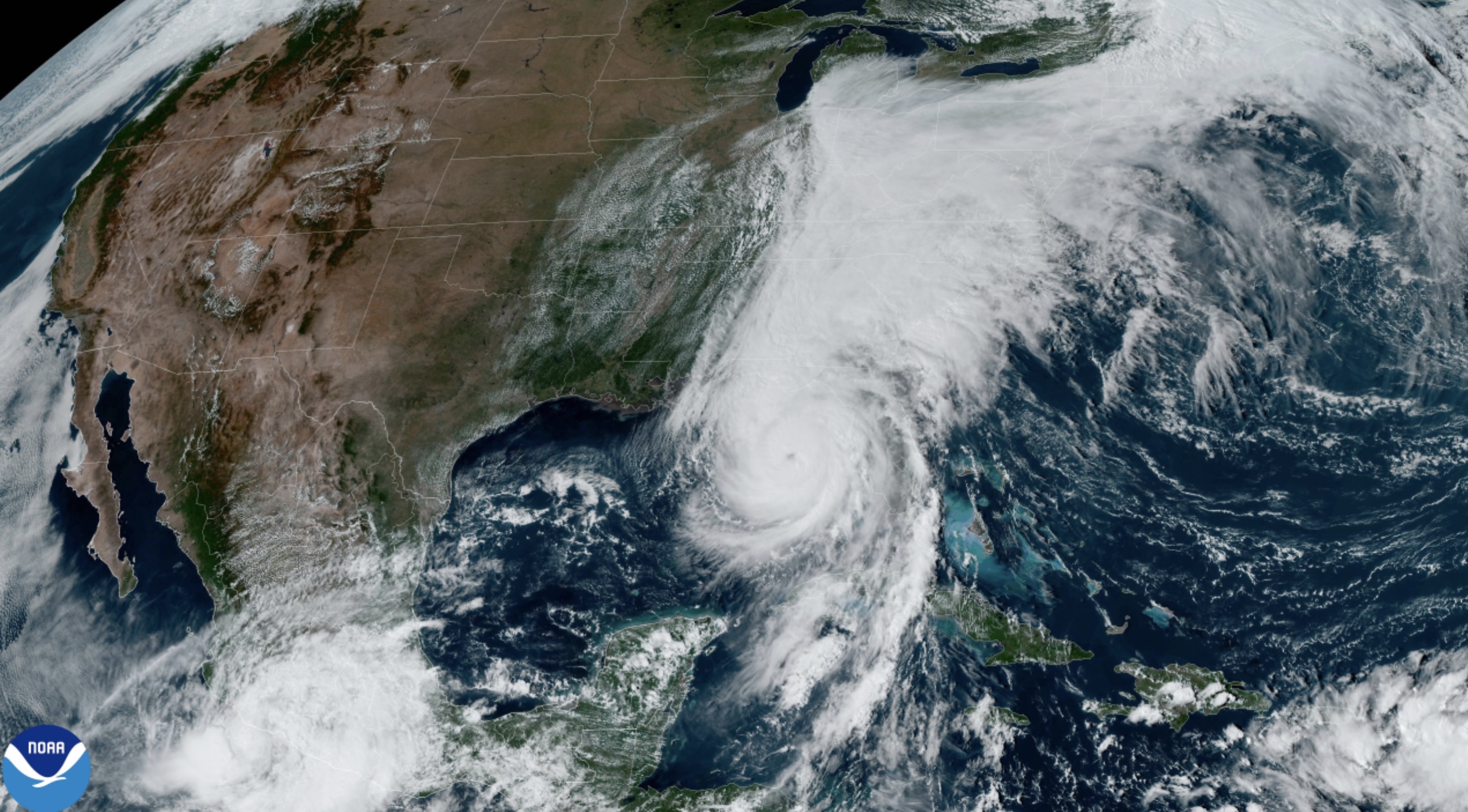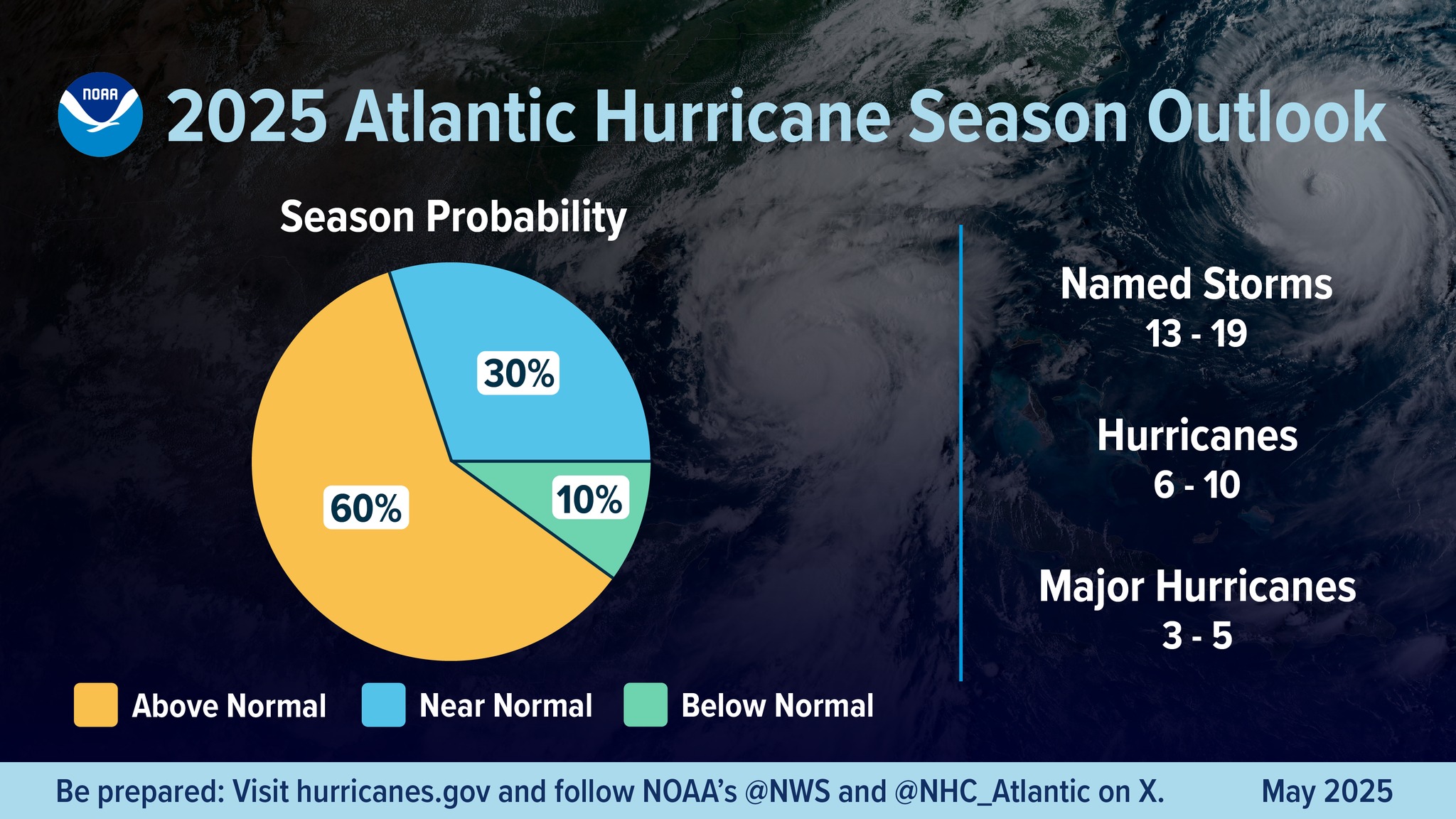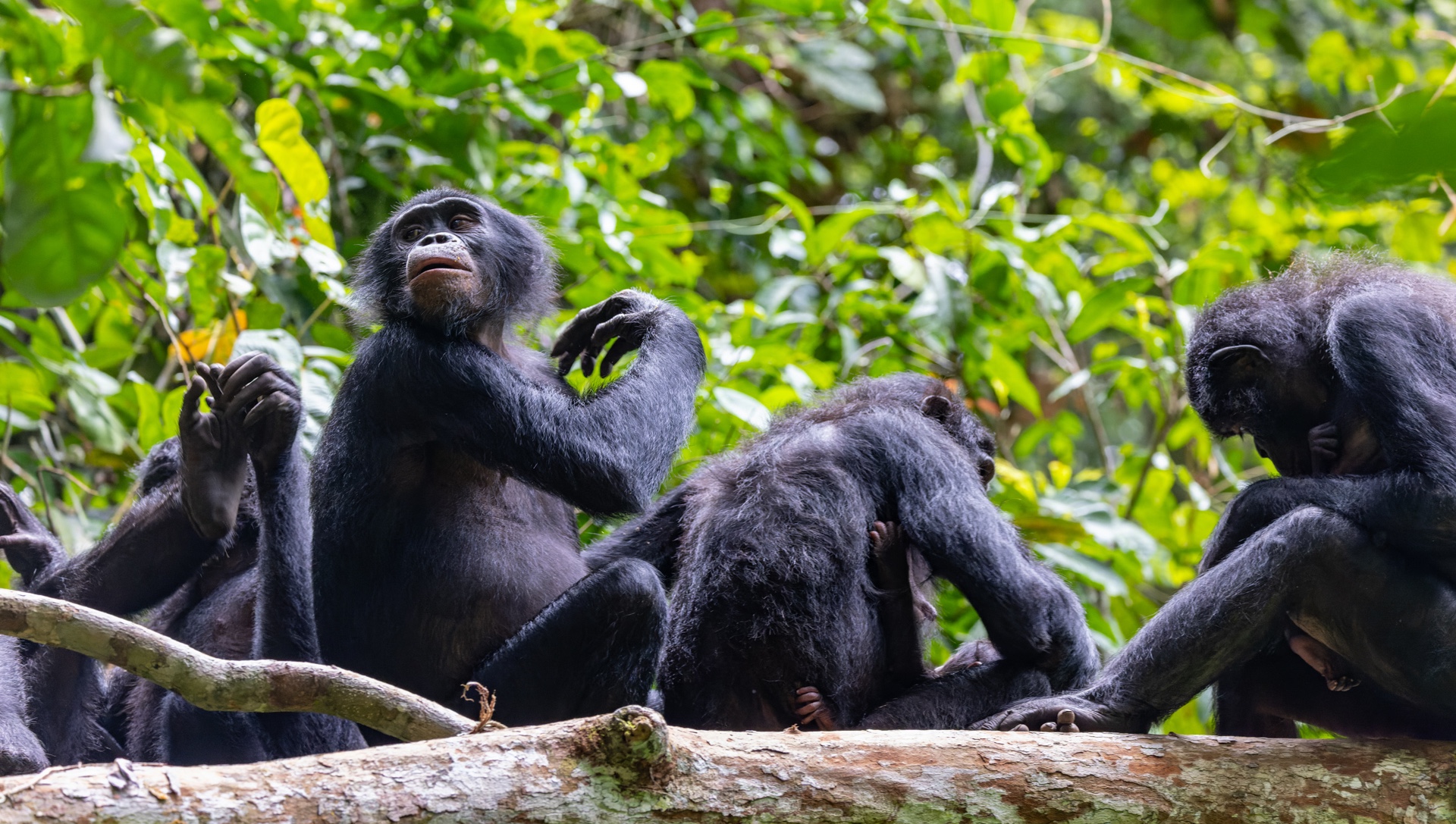'Above normal' conditions could bring as many as 10 hurricanes to the US this summer
Hurricane Helene captured by NOAA's GOES-16 satellite as it approached Florida on September 26, 2024.

2025's Atlantic hurricane season is expected to be more ferocious than usual, according to forecasts by the National Oceanic and Atmospheric Administration (NOAA).
The hurricane season, which begins on June 1 and runs until Nov. 30, is predicted to have a 60% chance of above-normal activity. There are expected to be 13 to 19 named tropical storms — with wind speeds of 39 mph (63 km/h) or higher — six to 10 of which are expected to become hurricanes, with three to five of these hitting major hurricane status — with wind speeds above 111 mph (179 km/h).
Years with normal levels of hurricane activity experience 14 named storms, seven hurricanes and three major hurricanes.
"NOAA and the National Weather Service are using the most advanced weather models and cutting-edge hurricane tracking systems to provide Americans with real-time storm forecasts and warnings," U.S. Secretary of Commerce Howard Lutnick said in a statement on May 22.
Tropical storms usually form over the warm ocean waters near the tropics. If a storm becomes a rotating, organized thunderstorm system with wind speeds below 39 mph (63 km per hour), it is defined as a tropical depression, but once wind speeds exceed that level, the event is considered to be a tropical storm and is given a name from a pre-decided list. Storms become hurricanes once wind speeds reach 74 mph (119 km/h), with hurricanes being subdivided into five categories. Category 3, 4 and 5 hurricanes are classified as major hurricanes.
The hurricane season runs when ocean and atmospheric conditions are most favorable for tropical storms. Tropical storms need warm sea surface temperatures to form and strengthen, as well as little difference in wind speed and direction between the lower and upper levels of the atmosphere — known as vertical wind shear — which enables storms to organize vertically. Peak hurricane activity usually happens in September, when ocean temperatures and atmospheric conditions are most optimal. Before June and after November the ocean is generally too cool, and wind shear is higher.
Related: La Niña is dead — what that means for this year's hurricanes and weather
Get the world’s most fascinating discoveries delivered straight to your inbox.
Above-average hurricane activity is predicted this year because of warmer-than-average ocean temperatures and weak wind shear, allowing for more frequent and more powerful storms to form.
This year's Atlantic storms will be named, in order of appearance: Andrea, Barry, Chantal, Dexter, Erin, Fernand, Gabrielle, Humberto, Imelda, Jerry, Karen, Lorenzo, Melissa, Nestor, Olga, Pablo, Rebekah, Sebastien, Tanya, Van, and Wendy.
NOAA has a 70% confidence in its predictions of this year's storm frequency. Last year, before the 2024 hurricane season, NOAA predicted that there would be 17 to 25 named storms, eight to 13 hurricanes, and four to seven major hurricanes — an even more severe forecast than this year's outlook. However, the season actually resulted in 18 named storms, 11 hurricanes, and five major hurricanes.

Hurricane Beryl, which made landfall along the Texas coast in July 2024, was the earliest Atlantic Category 5 hurricane on record, while Hurricane Helene hit the Florida Gulf Coast on Sep. 26 as a Category 4 hurricane, and is considered the deadliest hurricane in the continental U.S. since 2005's Hurricane Katrina.
"As we witnessed last year with significant inland flooding from hurricanes Helene and Debby, the impacts of hurricanes can reach far beyond coastal communities," acting NOAA administrator Laura Grimm said in the statement. "NOAA is critical for the delivery of early and accurate forecasts and warnings, and provides the scientific expertise needed to save lives and property."
In the Pacific, where the hurricane season also runs from June 1 to November 30, activity is forecast to be lower than average in 2025, with NOAA predicting a 30% chance of below-normal storm activity, a 50% chance of normal activity, and only a 20% chance of above-normal activity. Between one and four named storms are predicted in the central Pacific for the season, where a near-normal season has 4 or 5 tropical storms.

Jess Thomson is a freelance journalist. She previously worked as a science reporter for Newsweek, and has also written for publications including VICE, The Guardian, The Cut, and Inverse. Jess holds a Biological Sciences degree from the University of Oxford, where she specialised in animal behavior and ecology.
You must confirm your public display name before commenting
Please logout and then login again, you will then be prompted to enter your display name.

